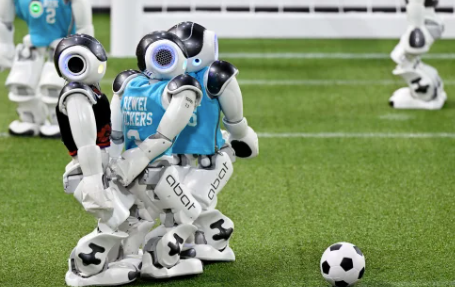
Summary – At RoboCup 2025 in Salvador, China’s humanoid robots stunned the world with unprecedented agility and tactics, redefining the future of robotic sports.,
Article –
At the RoboCup 2025 held in Salvador, Brazil, China’s adult-size humanoid robots amazed spectators with their exceptional agility and teamwork, ultimately securing the championship and showcasing a new frontier in robotic sports.
Setting the Stage
The RoboCup is an international event designed to advance robotics and artificial intelligence research through team-based soccer matches. The adult-size humanoid robot division, spotlighting bipedal machines mimicking human anatomy and movement, was among the most anticipated segments. Salvador, known for its cultural vibrancy and innovation, served as the perfect host for this event that blended raw technology with strategic gameplay.
China’s team was heavily supported by state-funded technology institutes, focusing on integrated AI, sensor fusion, and agile mechanical designs. Their robots featured advanced vision systems for real-time environment mapping and highly responsive locomotion systems enabling quick directional changes and stability during high-intensity play.
The Turning Point
The competition was fierce, with strong teams from Japan, Germany, and South Korea. However, the Chinese robots’ superior synchronization and adaptability shifted the momentum. A key moment emerged during the semifinal against Japan, where a well-coordinated counterattack—featuring rapid passes and a high-speed dribble—resulted in a crucial goal.
This play highlighted the robots’ use of advanced game theory within their AI, dynamically assessing opponent tactics and making split-second strategic decisions. The ability to alter strategies mid-match set the stage for their triumphant final match.
Tactical and Technical Breakdown
The robots employed a hybrid control system combining centralized AI decision-making with decentralized motor controls, ensuring both agility and teamwork. Movement algorithms balanced stability and energy efficiency, crucial for complex bipedal locomotion. Their perception systems used LIDAR and stereo vision cameras to track the ball and opponents accurately in dynamic environments.
Key technical features included:
- Kicking Mechanisms: Fine-tuned power regulation allowing curve kicks and precise passes.
- AI Learning: Reinforcement learning enabled adaptative play styles based on opponent behaviors.
- Predictive Modeling: Enhanced short-term memory integration facilitated anticipation of opponents’ moves.
Historically, this success represents a major leap from earlier RoboCup humanoid teams that struggled with basic locomotion and balance challenges.
Reactions from the Sport
The global robotics community expressed a mix of admiration and cautious optimism. Engineers praised the advancements in autonomy and teamwork while analysts pointed to the intensifying global competition driving breakthroughs with potential applications in manufacturing, rescue missions, and healthcare.
Futures observers in AI and robotics federations anticipate this victory will encourage increased international collaboration and investments in robotic soccer, fostering innovation beyond sports. The event also drew sponsor interest focused on pioneering technology and inspiring future engineers and programmers worldwide.
What Comes Next?
China’s RoboCup 2025 dominance is likely to influence future robotic designs, putting emphasis on integrated AI and mechanical systems with greater autonomy and strategic depth. Research will focus on improving human-like reflexes and cognitive models within humanoid robots.
Additionally, RoboCup acts as a proving ground for AI safety, multi-agent coordination, and machine learning developments that can transfer to real-world robotics applications. With forthcoming RoboCup competitions scheduled, other nations are expected to innovate rapidly in response.
The broader impact of China’s technical and tactical innovations in Brazil on sports robotics ecosystems remains an exciting area to watch.

More Stories
How Tokyo’s World Athletics Championships Opened with Unforgettable Shot Put and Racewalk Showdowns
Racewalking Revolution and Shot Put Surprises Ignite Day 1 at World Athletics Championships 2025
Inside India’s Ambitious Journey to Join the World’s Top Ten Sporting Nations